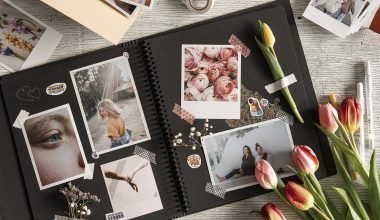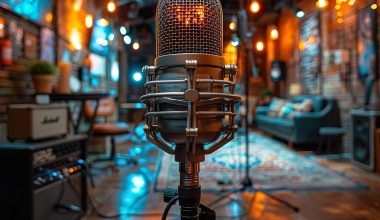Creating a professional recording studio setup at home is a dream for many aspiring musicians, podcasters, and producers. With technological advancements, it has become easier and more affordable to achieve a high-quality sound without having to rent an expensive studio space. Whether you’re a beginner or looking to upgrade your current setup, this comprehensive guide will walk you through everything you need to know to create a professional-grade studio at home.
1. Planning Your Professional Recording Studio Setup
Before jumping into buying equipment, it’s essential to plan your recording studio setup carefully. Planning includes deciding the purpose of your studio, the space you’ll use, and your budget.
- Identify Your Needs: Are you a musician, voice-over artist, or podcaster? Each type of work requires different gear. Musicians might need additional instruments and microphones, while podcasters can get by with a simpler setup.
- Space Consideration: The room you choose for your studio matters. You want a room that can accommodate your equipment comfortably, and soundproofing should be easier. Choose a space that’s not too small and has minimal external noise.
- Budget: Set a realistic budget. A professional recording studio doesn’t have to cost a fortune, but you need to ensure you allocate your funds wisely. Focus on the essential items first, such as good microphones, monitors, and an audio interface.
The planning phase helps avoid unnecessary purchases and ensures you make the best use of your space and budget.
2. Essential Equipment for a Professional Recording Studio Setup
Once you’ve planned your space, it’s time to gather the right equipment. Here are the must-have items for any professional home recording studio:
Audio Interface
An audio interface is the heart of your studio. It converts analog signals from microphones and instruments into digital audio, which your computer can process.
- Focusrite Scarlett and PreSonus AudioBox are popular, affordable choices. Look for interfaces with at least two inputs and outputs to get started.
Microphones
Different types of microphones are suited to different recording purposes:
- Dynamic Microphones: Great for vocals and live instruments. These are durable and handle high sound pressure levels well. The Shure SM58 is a popular choice for vocals.
- Condenser Microphones: Ideal for capturing the nuances in vocals and acoustic instruments. The Audio-Technica AT2020 is a highly recommended condenser mic for beginners.
- USB Microphones: For simple setups, a USB microphone like the Blue Yeti can plug directly into your computer without an audio interface.
Headphones and Studio Monitors
You’ll need both headphones for tracking and studio monitors for mixing.
- Closed-Back Headphones: These are essential during recording sessions to prevent sound leakage into the microphone. Consider the Audio-Technica ATH-M50x.
- Studio Monitors: Unlike regular speakers, studio monitors give you a flat sound without added color. This is crucial for mixing. The KRK Rokit series or Yamaha HS5 are popular choices.
Cables and Stands
Don’t forget the essentials like microphone stands, pop filters, and high-quality XLR cables. These might seem minor, but they contribute significantly to the overall quality of your recordings.
Computer and DAW
Your computer is the brains of your studio, so it’s essential to have one that can handle audio production software, also known as a DAW (Digital Audio Workstation).
- Mac or PC: Both work well, but Macs are often favored in the music production world for their reliability with software like Logic Pro X.
- DAW: There are many options, including Pro Tools, Ableton Live, and FL Studio. Choose one that suits your workflow and budget. Most DAWs offer free trials, so try a few before making your decision.
3. Setting Up the Perfect Acoustic Environment
Even with top-notch equipment, a professional recording studio setup won’t deliver quality results if your room’s acoustics aren’t right. Proper acoustic treatment helps minimize reflections, echoes, and outside noise, allowing for clear, professional recordings.
Soundproofing vs Acoustic Treatment
These two terms are often confused but serve different purposes:
- Soundproofing: Prevents external sounds from entering the room. It’s about creating isolation. You can use thick curtains, seal windows, or add door gaskets to reduce noise leakage.
- Acoustic Treatment: Focuses on improving the sound quality within the room by reducing echoes and reflections. It involves adding absorbers, diffusers, and bass traps to control sound waves.
Acoustic Panels
Acoustic panels absorb mid to high frequencies, reducing echoes and making the room sound more controlled. You can either purchase acoustic foam panels or make DIY ones using fiberglass and fabric.
Bass Traps
Low-frequency sounds are harder to control, so bass traps are essential in a professional recording studio. Place them in the corners of the room, where bass frequencies tend to build up.
Diffusers
Diffusers scatter sound waves, which helps reduce harsh echoes. You don’t need diffusers in small rooms, but they can be beneficial if your space is larger.
4. Setting Up Your Equipment for Optimal Workflow
Once you have your equipment and room ready, the next step in creating a professional recording studio setup is arranging everything for efficiency and comfort. Here’s a guide to setting up your gear:
Desk and Layout
- Place your audio interface, computer, and monitors at the center of your desk for easy access.
- Keep your keyboard and mouse close by to ensure comfortable operation during long sessions.
Microphone Placement
Microphone placement is critical for capturing the best sound:
- For vocals, place the microphone at a comfortable height, with the pop filter 2-4 inches away from the mic to reduce plosives.
- For instruments, experiment with microphone positions. A condenser mic placed about 6-12 inches away from an acoustic guitar’s soundhole can produce a natural, balanced sound.
Monitor Positioning
Position your studio monitors so they form an equilateral triangle with your head. They should be at ear level and pointed toward your listening position.
5. Recording and Mixing Techniques
A professional recording studio setup goes beyond the gear—it’s also about the techniques you use during recording and mixing. Let’s dive into some essential tips.
Recording Techniques
- Gain Staging: Ensure that the levels on your audio interface and DAW are set properly. Avoid clipping (distortion) by keeping input levels below 0dB.
- Vocal Recording: Use a pop filter to reduce plosive sounds. Record multiple takes to give yourself flexibility during editing.
- Instrument Recording: Position your microphone properly for each instrument. For drums, consider using multiple microphones—one for the kick drum, another for the snare, and overheads for the cymbals.
Mixing Techniques
- Equalization (EQ): Use EQ to balance the frequency spectrum of each track. Cut unnecessary low frequencies from vocals and boost the mids to make them stand out in the mix.
- Compression: Compression helps control the dynamics of your recordings, ensuring that quieter parts are audible without making the louder parts too overwhelming.
- Reverb and Delay: These effects add depth to your recordings. Use them sparingly to avoid muddying your mix.
6. Software and Plugins for a Professional Sound
The software you use plays a significant role in your studio’s sound. Here are some essential plugins and tools you’ll need:
Virtual Instruments
Virtual instruments allow you to add drums, synths, and other instruments to your tracks. Some popular options include Native Instruments Komplete and Xfer Serum.
Mixing Plugins
- Waves and FabFilter offer a wide range of mixing plugins, from EQs and compressors to creative effects like delays and reverbs.
- iZotope Ozone is a great plugin for mastering, offering an all-in-one solution to finalize your mixes.
7. Maintaining Your Professional Recording Studio Setup
A professional recording studio setup requires regular maintenance to ensure that everything runs smoothly:
- Backup Your Files: Always back up your recordings. External hard drives and cloud storage are great options to prevent data loss.
- Update Software: Keep your DAW and plugins updated to avoid compatibility issues and ensure optimal performance.
- Clean Your Gear: Dust and dirt can affect the performance of your microphones, monitors, and other equipment. Clean your studio regularly to avoid this.
Conclusion
Setting up a professional recording studio at home may seem like a daunting task, but with the right planning, equipment, and techniques, you can create a space that produces high-quality recordings. Focus on getting the essential gear, treat your room for optimal sound, and continuously refine your recording and mixing techniques. Whether you’re an artist, podcaster, or producer, having your own studio at home gives you the flexibility to create whenever inspiration strikes.
With the right approach, your professional recording studio setup will provide a solid foundation for producing music, podcasts, and voiceovers that sound professional and polished.
Related Articles:
For further reading, explore these related articles:
- How to Become a Successful Music Artist in India in 2024?
- Promo Cards on Spotify: A Game Changer for Artists
- Understanding ISRC Codes and Their Importance in Tracking and Distributing Your Music
For additional resources on music marketing and distribution, visit Deliver My Tune.






